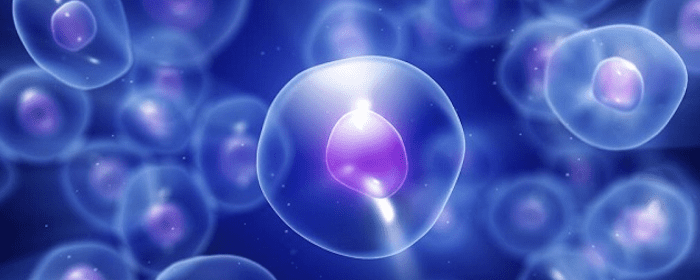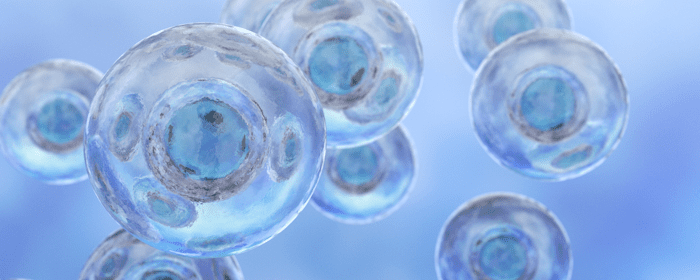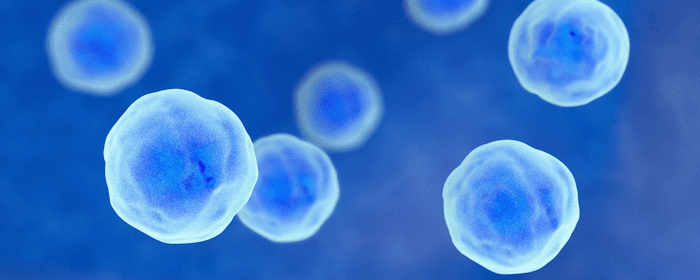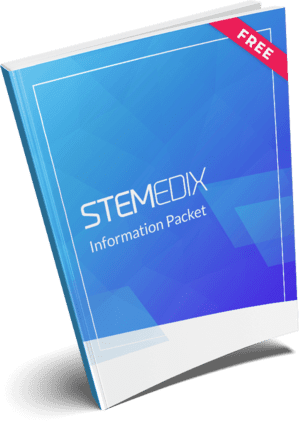
by admin | Jul 19, 2023 | Mesenchymal Stem Cells, Osteoarthritis, Stem Cell Therapy
Osteoarthritis (OA) is the most common and widespread form of arthritis, affecting an estimated 655 million people worldwide. Occurring as a result of cartilage degeneration, OA is a progressive degenerative disorder that most commonly affects the joints of the hands, hips, knees, and spine.
Although OA can affect anyone, it is most commonly observed in older patients. In fact, all individuals over the age of 65 are believed to demonstrate some clinical or radiographic evidence of OA.
While surgical and pharmaceutical treatment options for OA exist as a way to manage the symptoms and progression of the disease, treatment for the restoration of normal cartilage function has yet to be achieved.
Considering the tissue of joint cartilage is composed primarily of chondrocytes found in bone marrow-derived mesenchymal stem cells (BMSCs), using these specific stem cells appears to have significant potential for use in the therapeutic regeneration of cartilage.
In this review, Gupta et al. evaluate the advances in using BMSCs and their therapeutic potential for repairing cartilage damage in OA. Evaluating current research, the authors point out that one of the key characteristics of MSCs, including BMSCs, is that they are generally hypoimmunogenic and possess immunosuppressive activity, suggesting that BMSCs could be used as allogeneic applications for cartilage repair.
Preclinical models of OA have also demonstrated that the effects of MSC transplantation have been effective for cartilage repair. Additionally, clinical models have reported on the safety and positive therapeutic effects of MNSC administration in patients with OA.
The authors point out that while the exact mechanism by which BMSCs regenerate articular cartilage in patients with OA is not clear, their ability to induce proliferation and tissue-specific differentiation appears to aid in the repair of damaged cartilage.
The ability of BMSCs to migrate and engraft onto multiple musculoskeletal tissues and differentiate at the site of injury while demonstrating anti-inflammatory and immunosuppressive properties demonstrate their potential as a therapeutic treatment for degenerative diseases like OA.
While the information provided in this review demonstrates the potential of BMSCs to support treatment and recovery from the damage caused because of OA, Gupta et al. call for additional clinical studies to assess the curative properties and long-term outcome of using MCSCs for the treatment of OA before they can be used routinely as a clinical treatment for the condition.
Source: “Mesenchymal stem cells for cartilage repair in osteoarthritis – PMC.” 9 Jul. 2012, https://www.ncbi.nlm.nih.gov/pmc/articles/PMC3580463/.

by admin | Jul 12, 2023 | Adipose, Mesenchymal Stem Cells, Regenerative Medicine, Stem Cell Therapy
Mesenchymal stem cells (MSCs) isolated from a wide variety of tissues and organs have demonstrated immunomodulatory, anti-inflammatory, and regenerative properties that contribute to a host of regenerative and immunomodulatory activities, including tissue homeostasis and tissue repair. The most frequently studied and reported sources of MSCs are those collected from bone marrow and adipose tissue.
In this review, Krawczenkjo and Klimczak focus on MSCs derived from adipose tissue (AT-MSCs) and their secretome in regeneration processes.
Adipose tissue is the most commonly used source of MSCs, primarily because it is easily accessible and is often a byproduct of cosmetic and medical procedures. Like most MSCs, AT-MSCs are able to differentiate into adipocytes, chondrocytes, and osteoblasts; they are also able to differentiate into neural cells, skeletal myocytes, cardiomyocytes, smooth muscle cells, hepatocytes, endocrine cells, and endothelial cells.
In addition, AT-MSCs secrete a broad spectrum of biologically active factors that serve as essential components involved in the therapeutic effects of MSCs, including the ability to stimulate cell proliferation, new blood vessel formation, and immunomodulatory properties; these factors include cytokines, lipid mediators, hormones, exosomes, microvesicles, and miRNA.
Preclinical and clinical studies on AT-MSCs in tissue regeneration were demonstrated to contribute to wound healing, muscle damage, nerve regeneration, bone regeneration, and lung tissue regeneration.
Evaluating these studies, Krawczenko and Aleksandra Klimczak conclude that AT-MSCs and their secretome are promising and powerful therapeutic tools in regenerative medicine, primarily due to their unique properties in supporting angiogenesis.
The results obtained by the preclinical and clinical studies evaluated for this review suggest that the ability of AT-MSCs and their derivatives, including EVs and CM, to deliver a wide range of bioactive molecules could be considered as factors supporting enhanced tissue repair and regeneration.
Source: “Exosomes in Mesenchymal Stem Cells, a New Therapeutic Strategy ….” https://www.ncbi.nlm.nih.gov/pmc/articles/PMC4308409/.

by admin | Jun 28, 2023 | Mesenchymal Stem Cells, Stem Cell Research, Stem Cell Therapy
Cigarette smoking continues to be the leading contributor to preventable disease and death in the United States, including cancer, heart disease, stroke, lung diseases, diabetes, and chronic obstructive pulmonary disease (COPD). Smoking cigarettes also increases the risk of tuberculosis, certain eye diseases, and problems of the immune system, including rheumatoid arthritis.
An abundance of clinical research has clearly shown the detrimental effects cigarette smoke has on nearly every area of the body. However, while assumed to be equally dangerous in its effect on stem cells, there is surprisingly little research exploring the negative implications of cigarette smoking on stem cells.
In this review, Nguyen et al. share findings of recent studies on the effects of cigarette smoking and nicotine on mesenchymal stem cells (MSCs), with a specific focus on dental stem cells.
With their ability to self-renew, develop into specialized cell types, and migrate to potential sites of injury, stem cells have demonstrated the potential to build every tissue in the body and have also demonstrated great potential for tissue regeneration and associated therapeutic uses.
As the potential benefits and weaknesses of stem cells continue to be discovered, researchers have found that cigarette smoking negatively impacts the abilities of stem cells while also limiting stem cell viability for transplantation and regeneration.
While there has been a recent decline in the percentage of U.S. adults who smoke, over 34 million U.S. adults continue to be regular cigarette smokers. Interestingly, research has demonstrated the concentration of nicotine to be significantly higher in saliva than in blood plasma following nicotine administration via cigarette, e-cigarette, and nicotine patch – in some cases measuring up to eight times higher concentrations. Considering this research and considering the established detrimental effects of e-cigarette vapor – and presumably nicotine – on teeth and dental implants, the authors of this review hypothesized that there would be a similar effect when dental stem cells are exposed to cigarette smoke.
Reviewing the effect that cigarette smoke has on MSCs, the authors found that exposing MSCs to cigarette smoke extract (CSE) and nicotine impaired cell migration, increased early and late osteogenic differentiation markers, decreased cell proliferation, and significantly inhibited the ability of MSCs to differentiate to other types of cells.
Nguyen et al. reviewed research that determined cigarette smoke produced a negative impact on the proliferation and differentiation of dental pulp stem cells (DPSCs). Specifically, this research demonstrated a significantly higher depression of alkaline phosphatase (ALP) and osteocalcin (OC) genes in smokers when compared to nonsmokers. Additional studies found that smokers demonstrated reduced calcium deposition levels and production of ALP when compared to nonsmokers.
Cigarette smoke and nicotine were also found to negatively affect the migration capability of dental stem cells, slowing the migration rate by up to 12% in smokers while also producing a smaller reduction of scratch wound areas when compared to nonsmokers.
While there are not many studies directly comparing the effects of cigarette smoke and nicotine on MSCs and dental stem cells, the authors conclude that dental stem cells exhibit similar characteristics to bone marrow MSCs and that both of these types of stem cells demonstrate similar negative responses upon their exposure to nicotine.
While the authors call for further research to better understand the specific effects of cigarette smoke on dental stem cells, the authors conclude that the findings demonstrating similar responses to cigarette smoke and nicotine between dental stem cells and MSCs can be used to inform future dental stem cell studies. These findings will help dentists better identify which patients might be at an increased risk of poor healing in the oral cavity and if smoking cessation should be considered before undergoing any invasive or traumatic dental procedure, such as tooth extraction.
Source: Comparison of the effect of cigarette smoke on mesenchymal stem ….” https://journals.physiology.org/doi/10.1152/ajpcell.00217.2020.

by admin | Jun 7, 2023 | Stem Cell Therapy, Mesenchymal Stem Cells, Osteoarthritis, Regenerative Medicine
Osteoarthritis (OA) is the most common form of arthritis and is estimated to affect over 500 million people worldwide. A result of the progressive deterioration of the protective cartilage that cushions the ends of the bones, OA most commonly affects the hands, knees, hips, and spine and is characterized by pain, stiffness, and loss of mobility in and around the affected areas.
Without a known way to treat and/or prevent OA from occurring, current conventional treatment of the condition typically involves a combination of prescription and OTC drugs, physical therapy, and lifestyle adjustments in an effort to treat and slow the progression of the symptoms associated with OA.
As the beneficial applications of stem cells continue to emerge, and considering their ability to replace and repair cells and tissues throughout the body, researchers believe that they can be used to treat joint disorders, including OA. The majority of the current stem cell therapies being investigated for use in treating OA use mesenchymal stem cells (MSCs), primarily due to their multilineage differentiation towards cell types in the joints and for their immunoregulatory functions.
In this review, Kong et al. provide detailed information on OA and MSCs, share updated information on pre-clinical and clinical trials and related applications of MSCs, and discuss additional efforts on cell-based therapy for treating OA and other joint and bone diseases.
Several preclinical models have investigated MSCs in treating OA and have demonstrated success in generating cartilage from MSCs. In addition, several animal models have demonstrated the beneficial effect of MSCs on cartilage, including protecting existing cartilage, repairing defects of joint cartilage, regenerating and enhancing cartilage, and even preventing OA.
Additionally, there have been several animal models evaluating the effects of intra-articular injection of MSCs for treating OA with researchers noting marked regeneration of tissue and decreased degeneration of articular cartilage.
Clinical trials using MSCs to treat human joint cartilage defects have found that MSCs could be used to repair cartilage defects, improve joint function, reduce pain, and have demonstrated the potential to use MSC therapy for cartilage repair and regeneration as a way to reduce signs and symptom commonly associated with OA.
Although these studies have demonstrated the tremendous potential associated with the use of MSCs for treating OA, they have also highlighted some potential concerns associated with MSC-based therapy. These concerns include determining the specific number and type of MSCs best suited for treating OA, a better understanding of the timing and delivery strategies for the administration of MSCs, and identifying the stages of disease best suited for MSC therapy.
Further concerns highlighted by the authors include the potential of genetic influences when using autologous MSC cells for treatment, the potential for the overall quality of MSC cells used in older patients to be too low, and the overall safety of stem cell therapy as a therapeutic treatment option for OA.
Despite the concerns identified above, Kong et al. conclude that the advancement of regenerative medicine and innovative stem cell technology offers a unique and exciting opportunity to treat OA.
Source: “Role of mesenchymal stem cells in osteoarthritis treatment – NCBI.” https://www.ncbi.nlm.nih.gov/pmc/articles/PMC5822967/.

by admin | May 24, 2023 | Stem Cell Therapy, Mesenchymal Stem Cells, Stem Cell Research, Stroke
With nearly 15 million people affected worldwide each year, stroke continues to be the most prevalent cerebrovascular disease. Responsible for over 5 million deaths and another 5 million individuals suffering long-term disabilities, stroke also is the leading cause of mortality and morbidity worldwide.
Although there have been significant advances in both pharmacological and surgical therapies designed to treat the effects of stroke, effective therapy remains limited and primarily focused on managing the symptoms associated with a stroke rather than treating the causing factors or preventing the stroke at the onset.
Recently regenerative medicine, also known as stem cell therapy, and specifically mesenchymal stem cell (MSC)-based therapy has been identified as a potentially effective strategy for a wide range of diseases and health conditions, including stroke.
In this review, Li et al. examine current preclinical and clinical data from trials using MSCs in the treatment of stroke, the mechanisms underlying MSC-based therapy for stroke, and the challenges associated with the timing and delivery of MSCs.
Initial preclinical studies of the application of MSCs in the treatment of stroke demonstrated that transplantation of MSCs following ischemic stroke promoted improvement of cerebral function protected the ischemic neurons, and repaired brain damage. However, these studies were conducted in young and healthy subjects and failed to factor in the presence of comorbidities, such as diabetes and hypertension, more commonly observed in ischemic stroke patients.
Considering that 75% of strokes occur in the elderly and/or those with the previously mentioned comorbidities, the authors of this review focused their review on studies that incorporated these two factors into their trials.
While these preclinical studies of MSC-based therapy for stroke demonstrated promising results, including improved blood-brain barrier integrity, increased white matter remodeling, and improved neural repair, the authors point out that there has been a limited number of preclinical studies conducted and call for additional preclinical studies specifically utilizing the comorbidity model.
Although treatment of stroke using MSCs has been established to be safe and feasible in phase I and II clinical trials, there have been mixed findings as to the therapy’s efficacy. As a result of these varied findings, the overall efficacy in the treatment of ischemic stroke remains controversial. The authors consider several reasons for the inconsistency of results observed in these trials, including the varied number of patients, doses, and type of cell delivery, the timing of the cell therapy, and the treatment modalities used in these trials; the authors also call attention to the different locations, extent, and severity of lesions used in these trials.
As a result of the inconclusive results surrounding the effectiveness of MSC-based therapy for the treatment of stroke in these clinical trials, the authors call for more optimized and well-designed large-sample multicenter studies to evaluate the therapeutic efficacy of MSCs more thoroughly in ischemic stroke.
While the underlying mechanisms of MSC-based therapy for stroke have not been fully explained or understood, a review of several studies has demonstrated that MSCs protect against stroke through multiple mechanisms, including direct differentiation, paracrine effects, and mitochondrial transfer.
Before MSCs can be widely applied in clinical practice, Li et al. highlight several challenges that need to first be considered. These challenges include determining the optimal time for MSC administration during the acute stroke stages, further understanding the best treatment, conditions, and strategies to maximize the regenerative potential of MSCs, identifying the simplest and safest route of MSC delivery, and identifying the best source of MSCs for stroke treatment.
The authors conclude this review by recommending future preclinical and clinical studies that consider the adoption of a well-designed randomized controlled study design and method rigor and intervention measures to determine the effect of MSC therapy in the treatment of stroke.
Even with considering the above recommendations, MSCs continue to demonstrate exciting potential as a means to protect neurons and improve outcomes and overall quality of life for stroke patients.
Source: “Mesenchymal Stem Cell-Based Therapy for Stroke – NCBI.” 9 Feb. 2021, https://www.ncbi.nlm.nih.gov/pmc/articles/PMC7899984/.






 St. Petersburg, Florida
St. Petersburg, Florida
